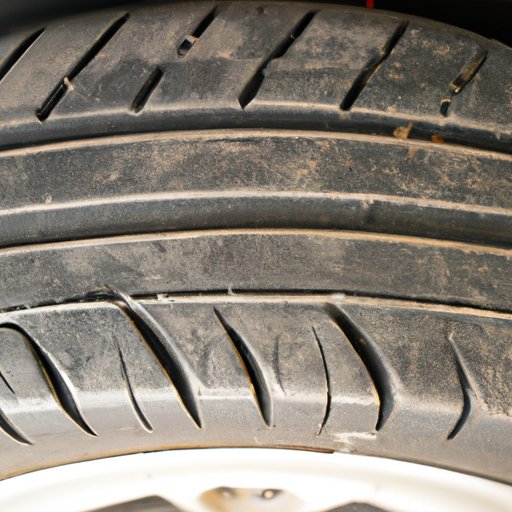
Introduction
Knowing when to replace your vehicle’s tires is essential to ensure your safety and save your wallet. Often tires are the last thing on a driver’s mind, but they serve as the only point of contact between your car and the road. Therefore, tire maintenance and replacement are necessary. This article will discuss the frequency of tire replacements, signs it’s time to replace tires, benefits of regular tire maintenance, the difference between new and retread tires, the cost of neglecting tires, and much more.
The Lifespan of Your Tires: How Often Should You Replace Them?
Several factors can influence how long your vehicle’s tires last. Road condition, driving habits, and climate conditions all play a significant role in determining the lifespan of your tires. Most manufacturers recommend that you replace tires after six years or 60,000 miles, whichever comes first. However, keeping an eye on your vehicle’s tires more closely is essential to avoid accidents and damage.
5 Signs It’s Time to Replace Your Tires
Lack of maintenance, wear and tear, and punctures can all affect the functionality of tires. Here are five warning signs that it’s time to get new tires:
1. Low Tread Depth:
When the depth of the tire’s tread is less than 1/16th of an inch, it’s time to replace them. Lack of sufficient tread depth can lead to decreased traction, which can increase the stopping distance of the car and reduce the driver’s control over the vehicle.
2. Punctures:
Any puncture in the tire bigger than 1/4 inch can’t be repaired, and the tire needs to be replaced. The puncture could weaken the internal structure of the tire and cause further damage.
3. Cracks:
When you notice cracks or fissures in your tire’s sidewall or between the treads, it’s time to replace them. This could be the result of excessive heat or exposure to sunlight.
4. Uneven Wear:
If the tire’s treads are uneven, it’s time to get the tires checked. It could indicate a problem with the wheel alignment, weak shock absorbers or struts, or incorrect tire inflation. Uneven wear can lead to an uneven ride and reduced handling capabilities.
5. Vibration:
If you notice unusual vibrations when driving your car, it may be because of an issue with your tires. Warped or damaged tires can cause your vehicle to vibrate excessively and affect the handling of your car.
The Benefits of Regular Tire Maintenance: How to Make Your Tires Last Longer
The best way to prolong the lifespan of your tires is to perform regular maintenance activities. This includes regular tire rotation, balancing, and alignment. Replacing damaged tires and maintaining the correct air pressure can extend the life of your tires. Performing regular oil changes and avoiding sudden stops or starts can also help improve your vehicle’s performance, contributing to longer-lasting tires. Regular maintenance can save you money and hassle by prolonging your tire lifespan.
New Tires vs. Retread Tires: What’s the Difference, and Which Is Right for You?
When it comes time to replace your tires, you may wonder if you should buy new tires or retread ones. New tires come with numerous benefits, including improved handling, traction, and reliability. In contrast, retread tires are cheaper, eco-friendly, and more easily accessible. However, retread tires could lead to increased wear and tear, reduced traction, and decreased stability in harsh driving conditions. Ultimately, the choice between new or retread tires comes down to individual preference and budget.
The Cost of Neglecting Your Tires: Why Waiting Too Long to Replace Them Could Hurt Your Wallet and Your Safety
Driving on worn-out tires can lead to serious consequences. You might think it’s okay to keep driving on your tires until the very end, but waiting too long to replace them could lead to accidents, damage to your vehicle, and increased fuel costs. Worn-out tires have less traction, which can lead to longer stopping distances and reduced handling capabilities, making it more challenging to control your vehicle. Regular tire maintenance and timely replacement can prevent you from experiencing these issues and help you save on potentially expensive repairs or replacements.
Conclusion
Knowing when to replace your tires is critical to your safety and the longevity of your vehicle. Performing regular maintenance activities, such as tire rotations, balancing, and alignment, can extend the lifespan of your tires. Additionally, understanding signs like low tread depth, punctures, cracks, uneven wear, and vibrations can help you know when it’s time to replace your tires. Finally, avoid neglecting your tires, which could hurt your wallet and your safety. Prioritizing your tire maintenance and replacement when required could help make your driving experience smoother and safer.




